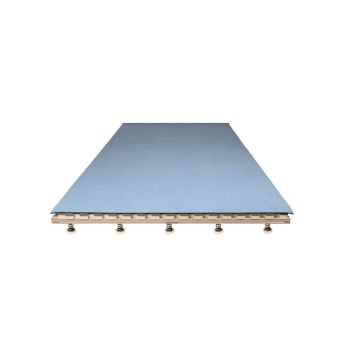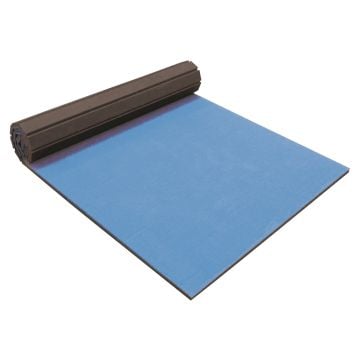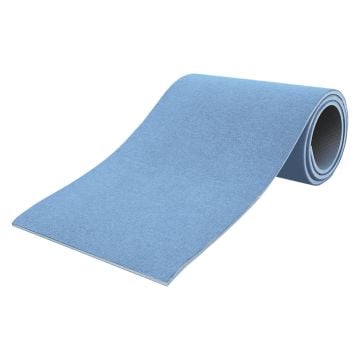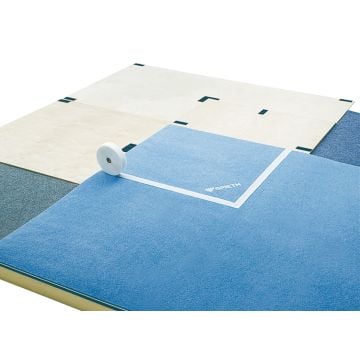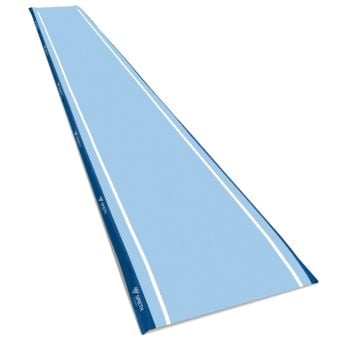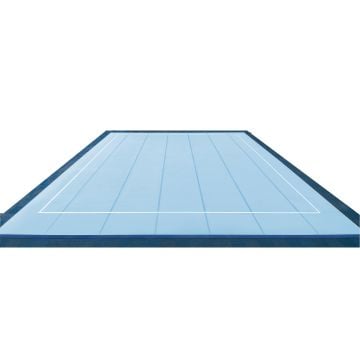
Floor Exercise Mats
Floor exercise mats for training and competition
Whether in school sports, in children's gymnastics or in clubs: those who exercise on the floor put a soft and non-slip mat underneath as fall protection. A floor gym for floor exercises is soft enough to cushion falls and prevent injuries. At the same time, it protects the joints, but offers a firm surface in comparison to a soft floor mat to prevent it from buckling. As accessories, roll-up cores and mat trolleys for transport and storage as well as Velcro tape for safe connection and connection of several mats are available. During training, the mat can offer security and be designed in any size and format, but in competitions certain requirements must be met.
Differences in floor exercise mats
Basically, different types of mats are used in floor exercise. Depending on the area of application and professionalism, it must be decided which floor exercise mat is best suited. There are also a large number of manufacturers, with Spieth and Bänfer among the best known in Germany.
Rolled up mats
The classic floor exercise mat is the rolled up mat, which is rolled out in different lengths as a sheet on the sports hall floor. These can be found in almost every gym and are used particularly often in physical education. Thanks to the roll-up core, they are easy to assemble and dismantle, and with the right mat trolley you can also find space in most equipment garages.
Swinging floors
Vibratory floors are often used in gymnastics clubs and competitions. Compared to the classic rolled up mats, thanks to their substructures, they have a significantly stronger spring effect with the same fall protection. Many of the swing floors are FIG-certified and therefore officially approved for competitions. They are also permanently installed, i.e. transport is only possible to a limited extent and the space for the jumping floor must be permanently provided.
Tumbling tracks
Tumbling tracks also have a noticeably better spring effect thanks to their substructure. Compared to the swinging floors, however, they are laid out as a longer track so that gymnastic and acrobatic elements can be arranged in a row.
Tumbling tracks are not only used in classic floor exercises, but also in acrobatics, cheerleading and in the training of some martial arts or in parkour, the spring tracks are very popular. For this very reason, they are often referred to as acrobatic tracks.
Gym mats
Classic gymnastics mats, light gymnastics mats (less weight) and soft floor exercise mats can be used as soft floors for protection during training, but due to the lack of spring action and the thickness, they are not among the usual floor gymnastics mats.
Rolled up mats - The floor exercise mats for every need
A floor exercise mat in a school sports hall must fit on a mat wagon, no question at all. Rolled up, the mats made of skin-friendly PE foam with or without a needle felt cover are easy to transport. They are stacked to save space on the trolley or on a special shelf for rolled up mats. When doing floor exercises, however, the mat is not always handled by several people, roll-off cores allow simple assembly and disassembly by individual people. Floor gymnastics mats with multi-layer light foam dampen very well and also allow rolling up without a roll core. It is also practical that many of the rolled up mats are available in different lengths. Whether as a run-up track for gymnastics, for the floor exercise track or as a floor mat in the movement circle, floor exercise mats can be used in very different ways.
How do you care for a floor exercise mat with needle fleece?
The simple surface cleaning is done with a vacuum cleaner, because the dirt particles are really easy to remove. A vacuum cleaner with a tapping mechanism is ideal: it also removes particles deeper in the felt. Moist stains are sprayed with lukewarm water and carpet cleaner and dabbed off with a terry cloth. Then the floor mat can be dabbed with a cloth with clear water. The manufacturer's instructions should be observed in any case.




